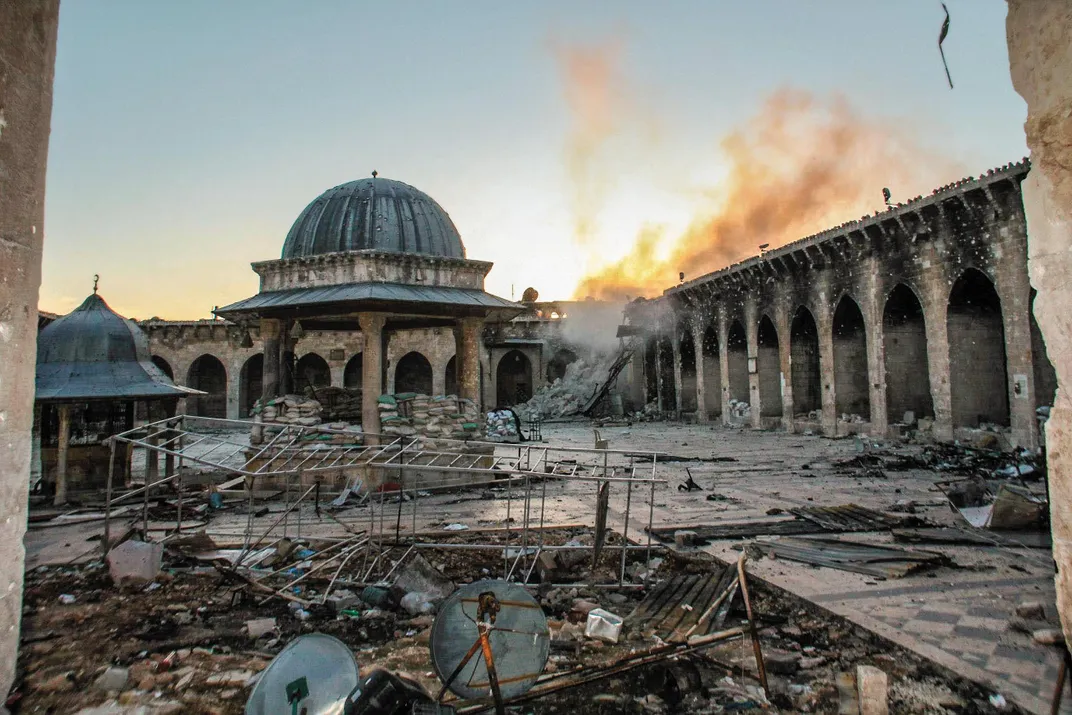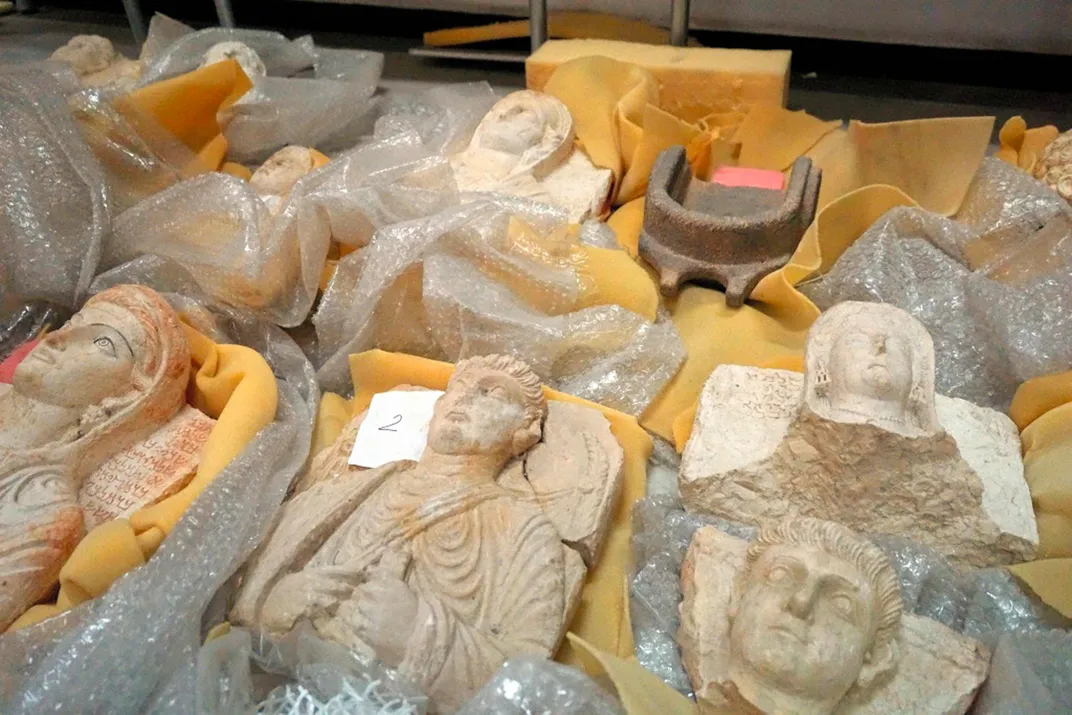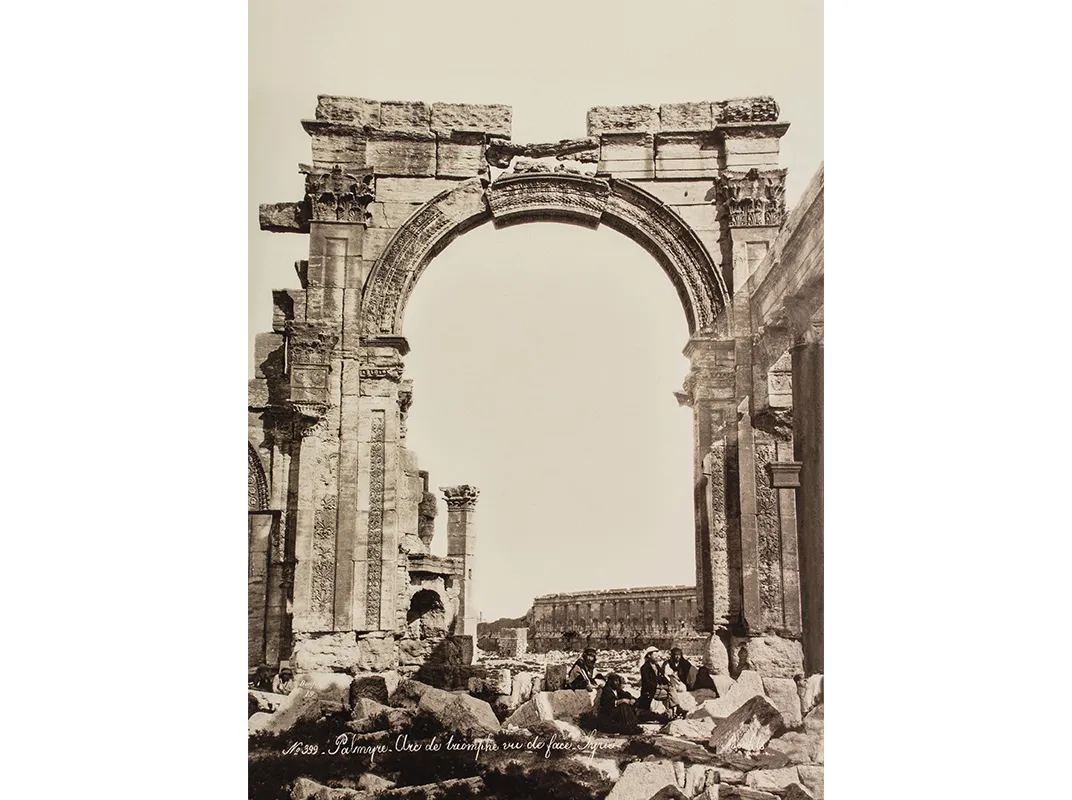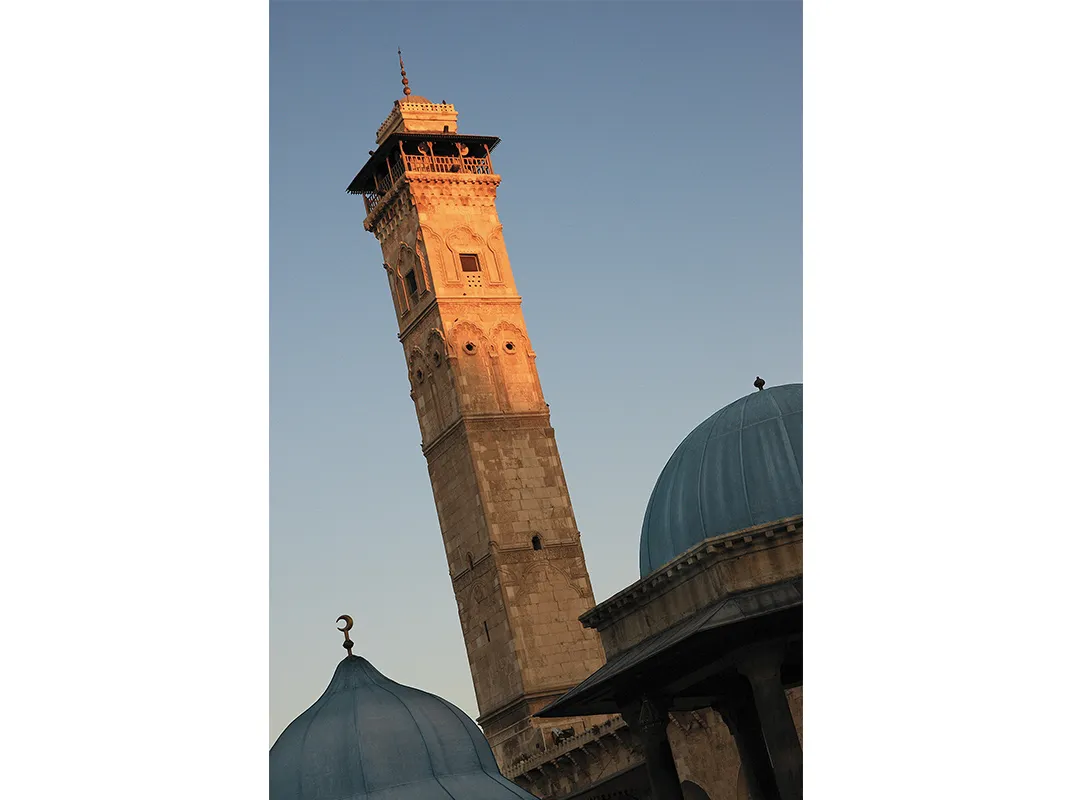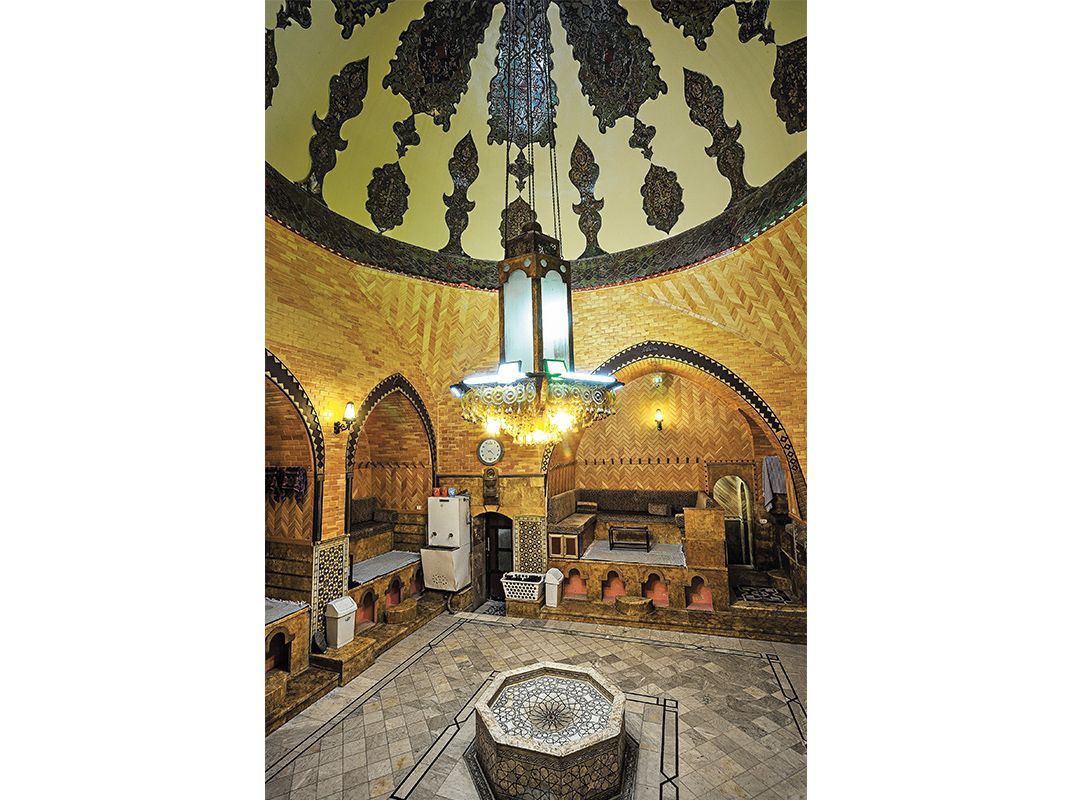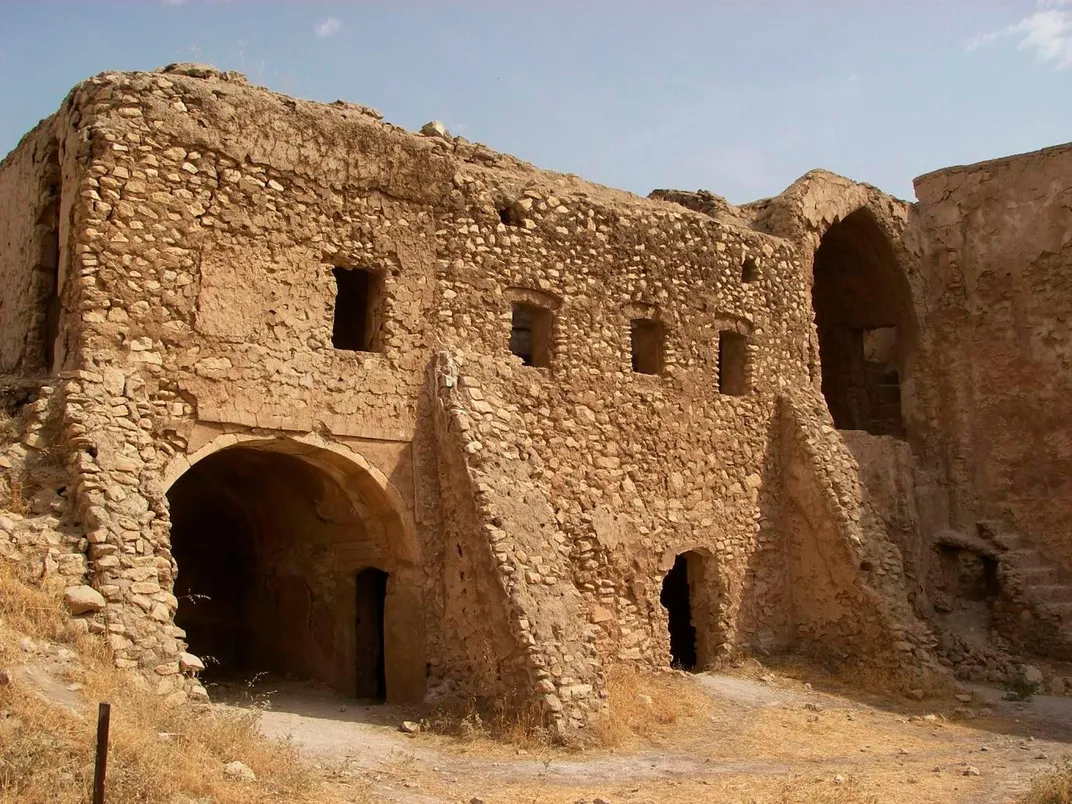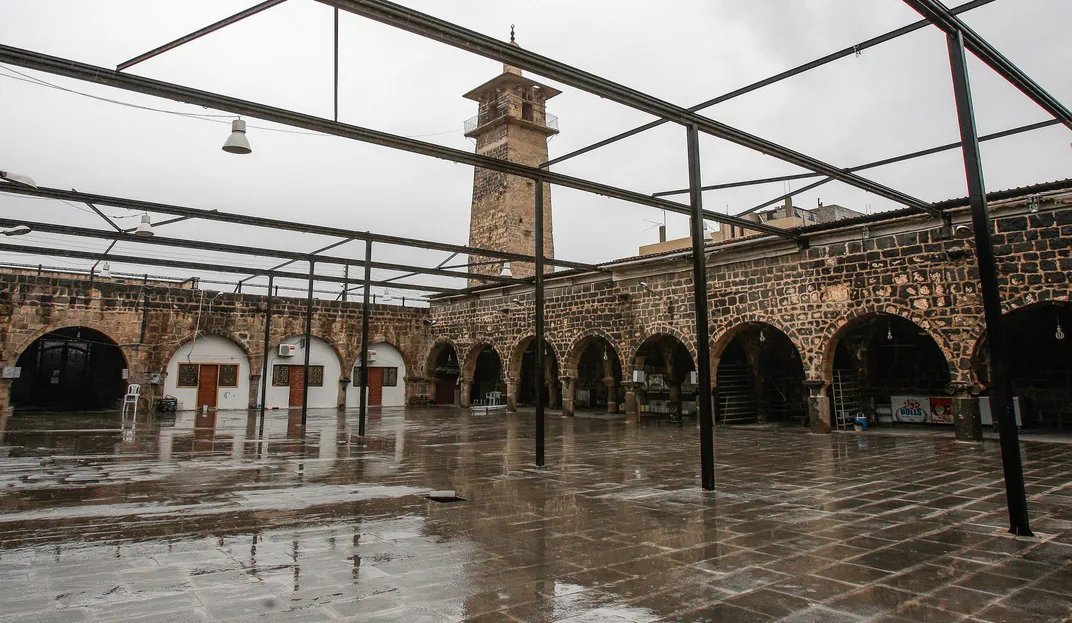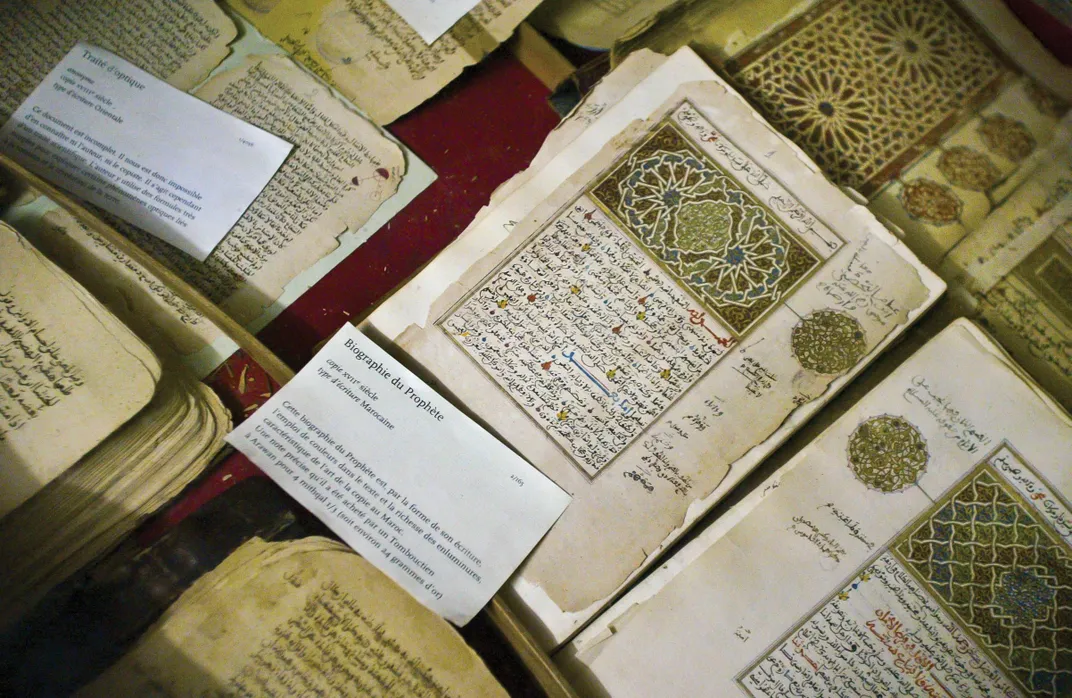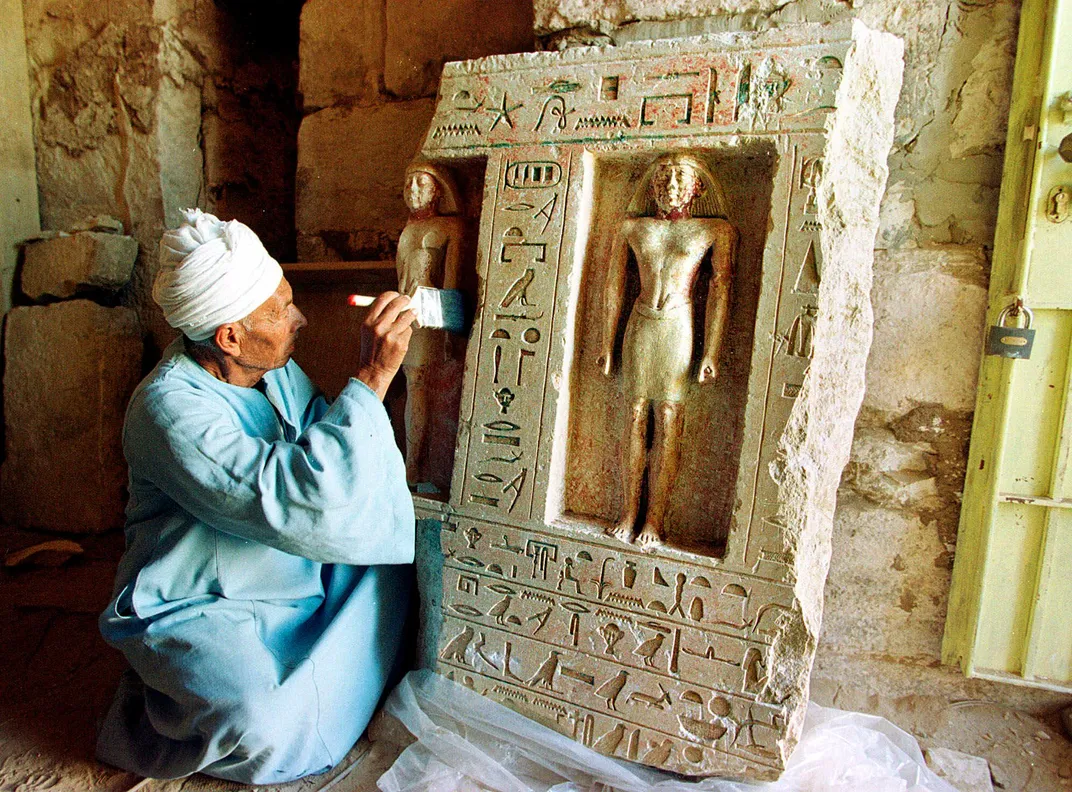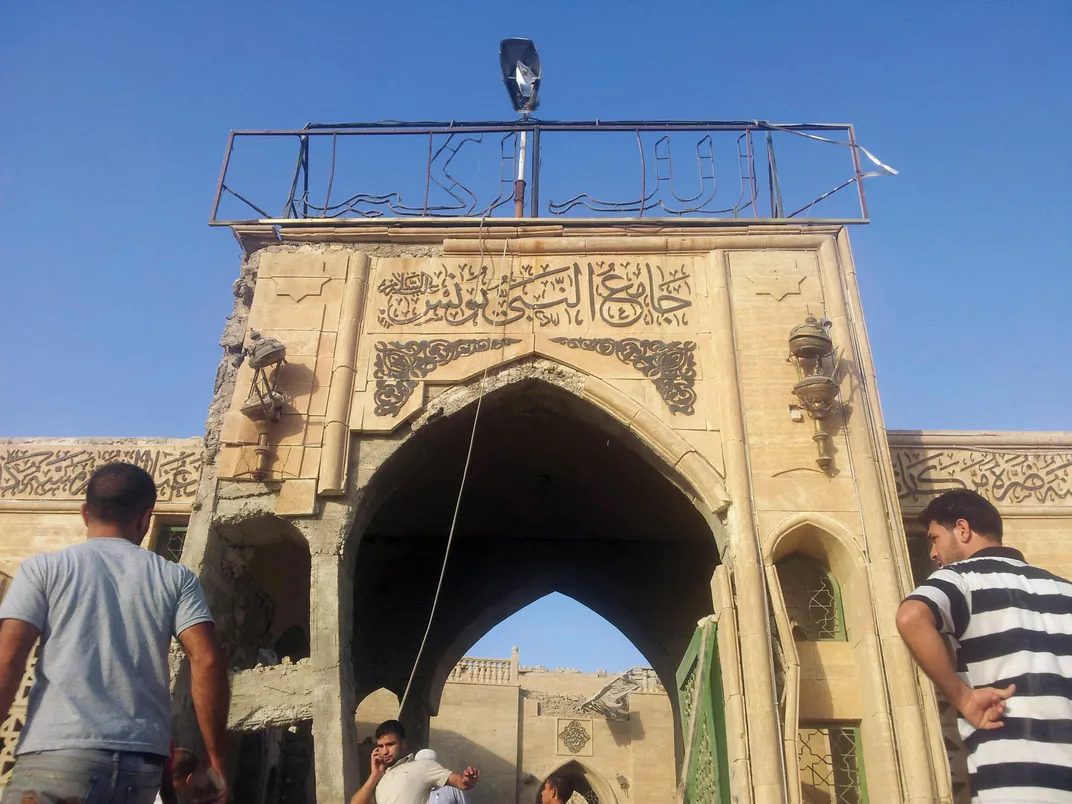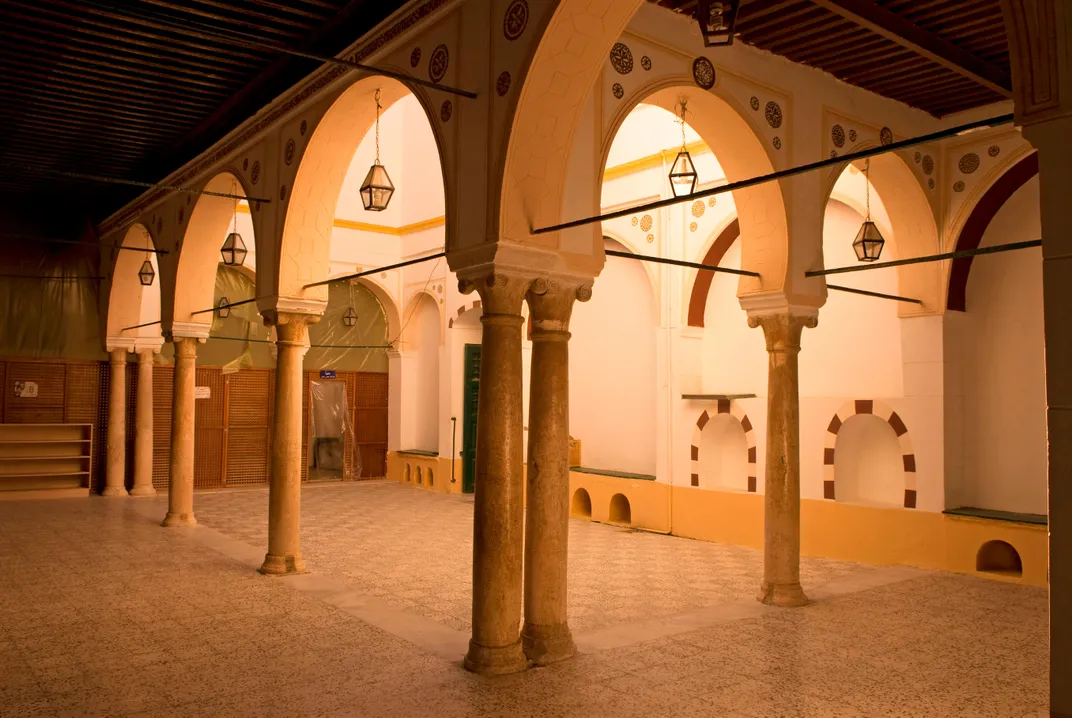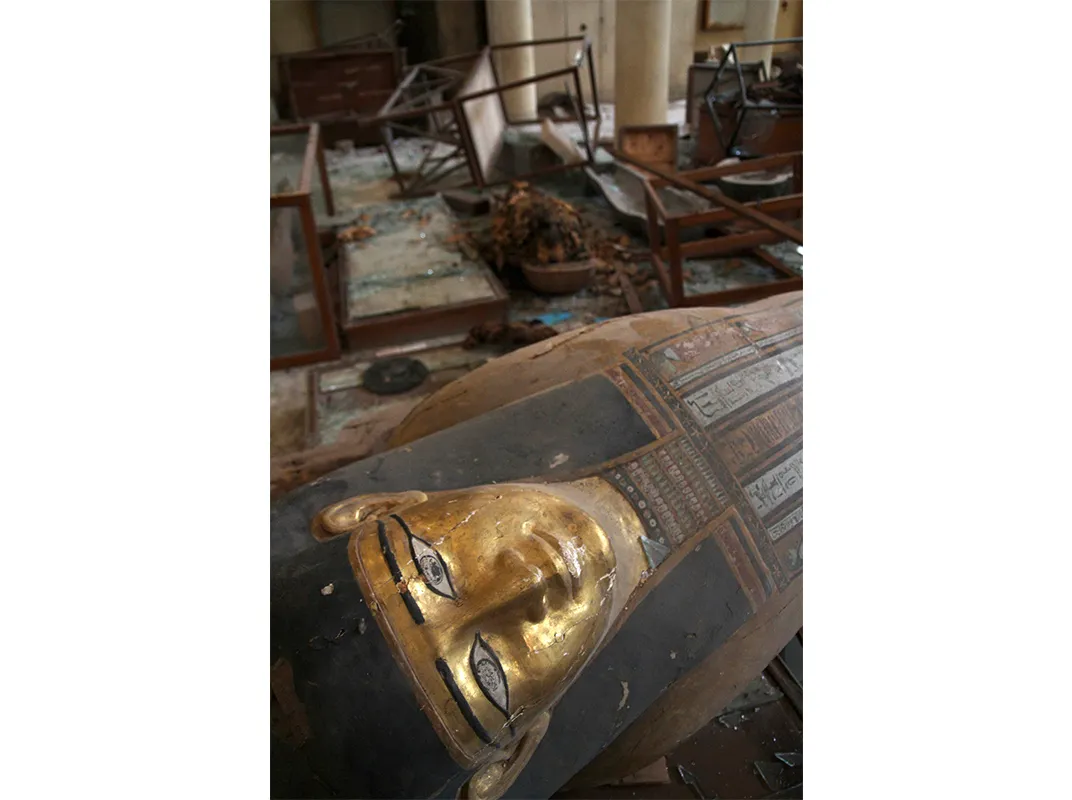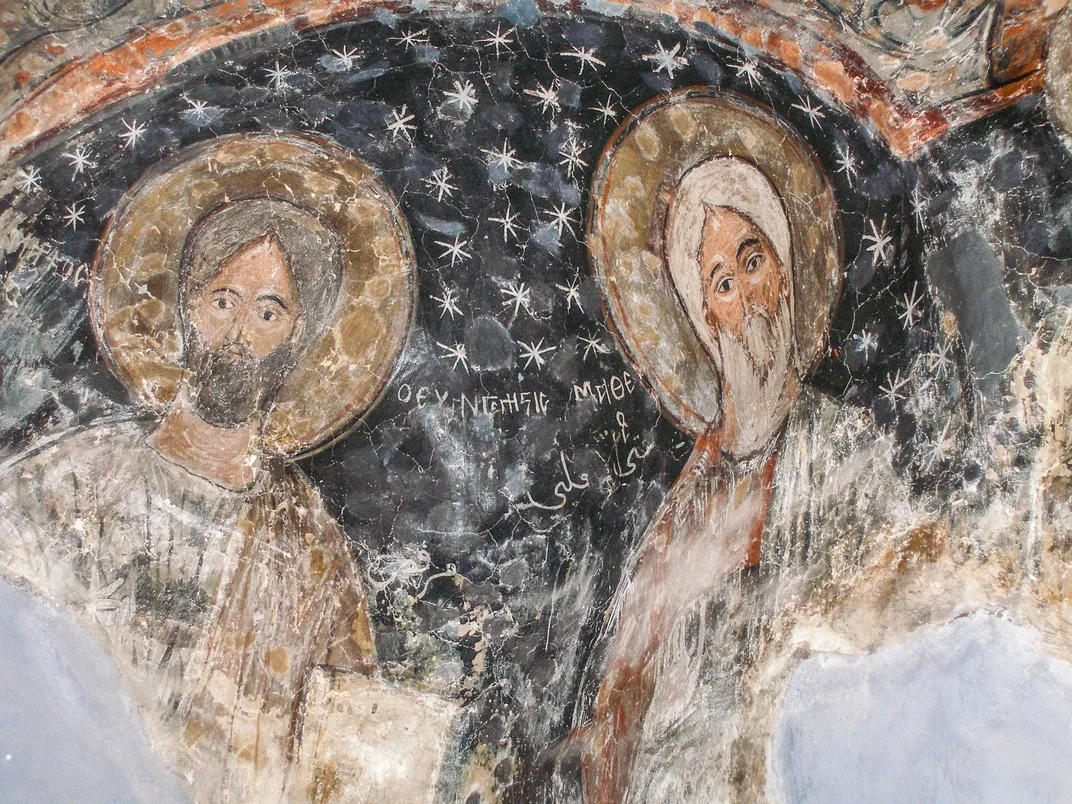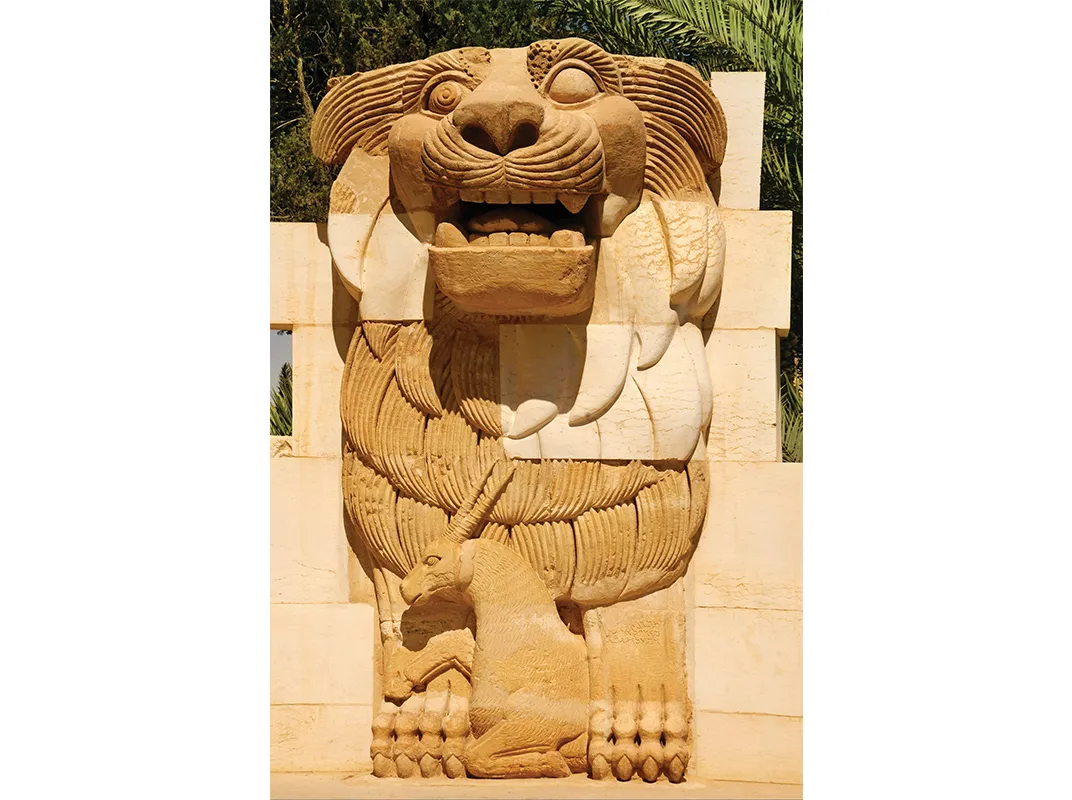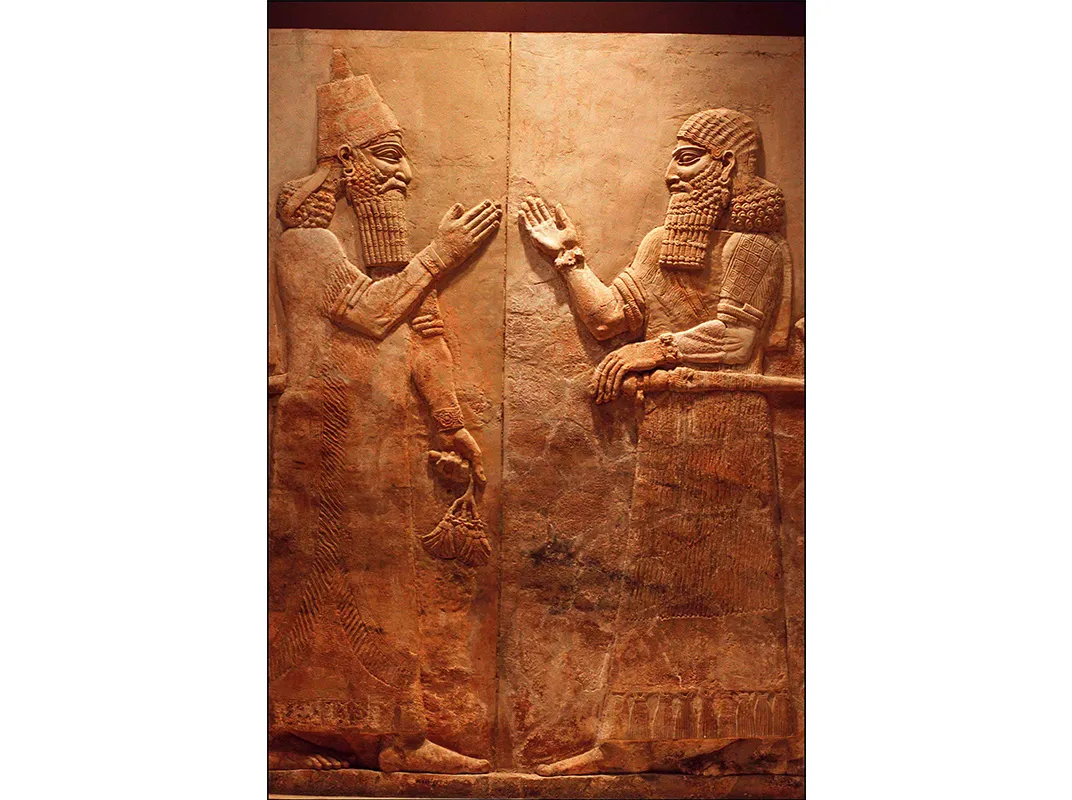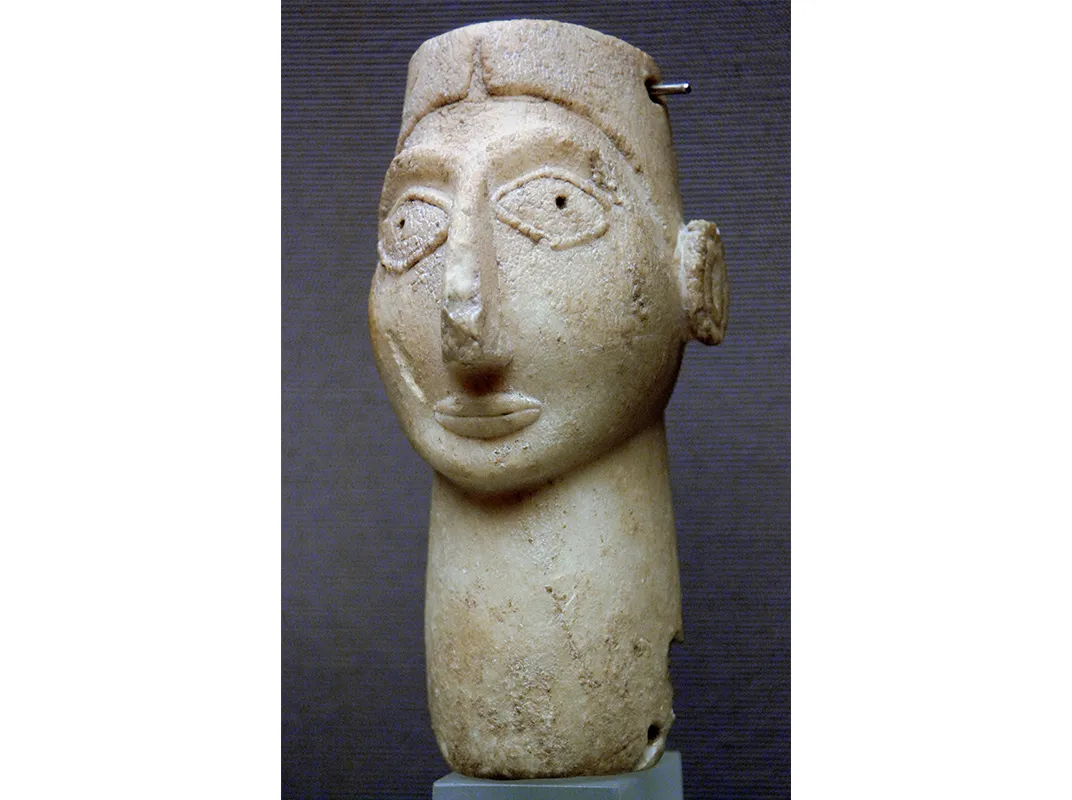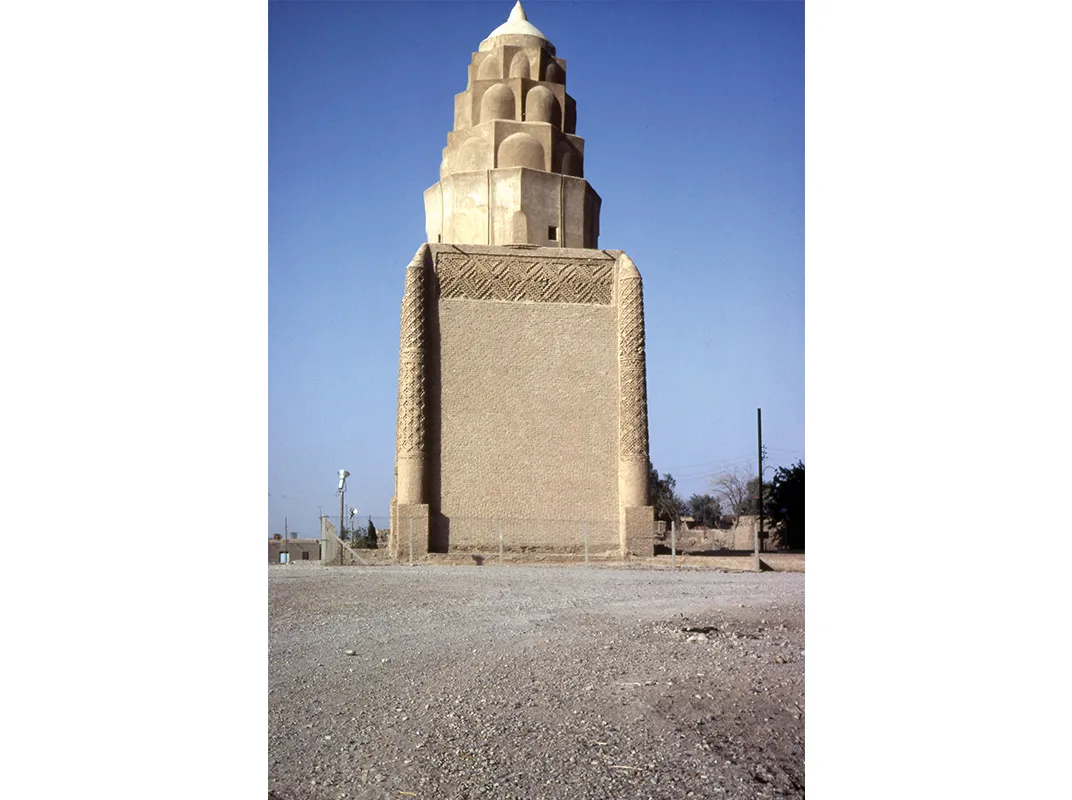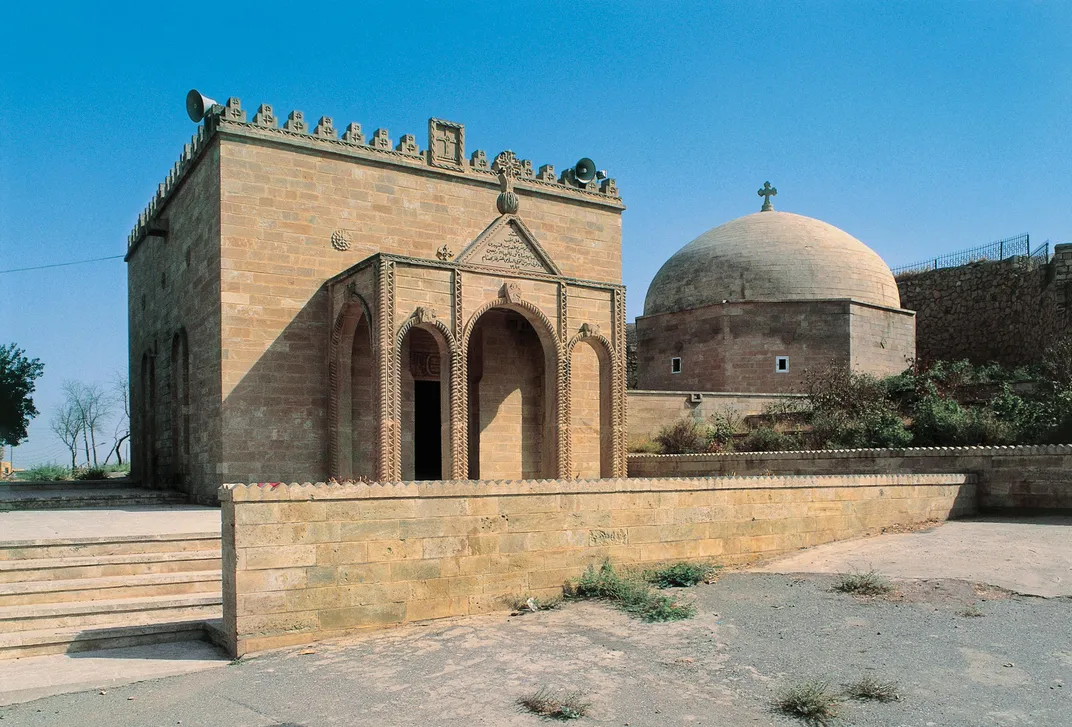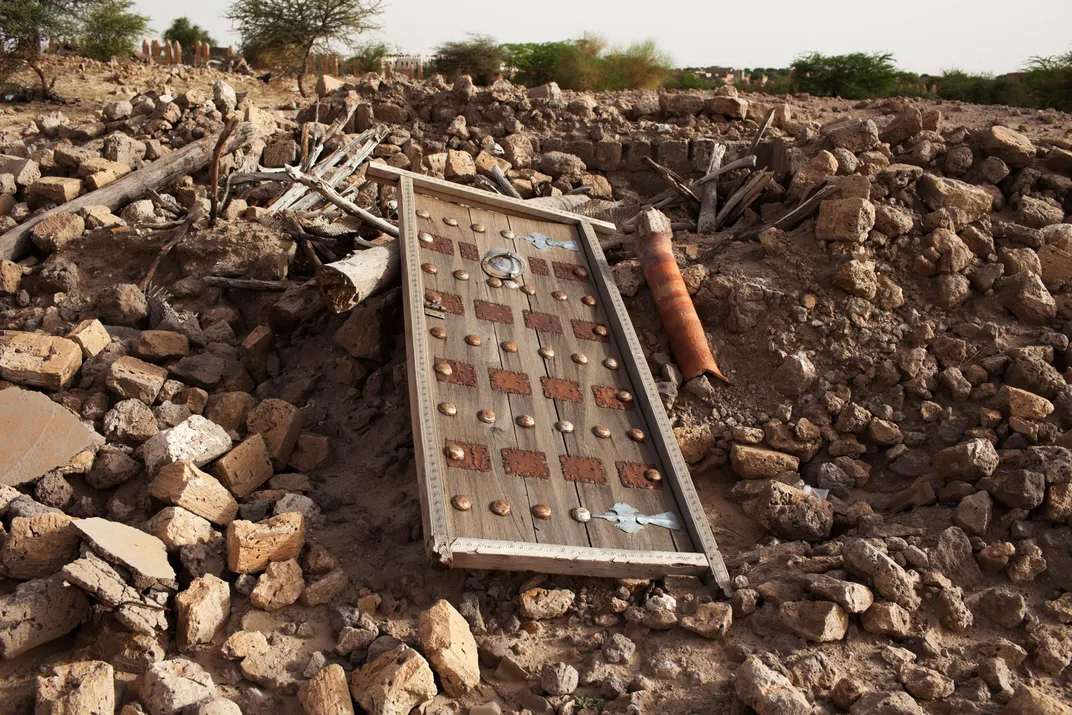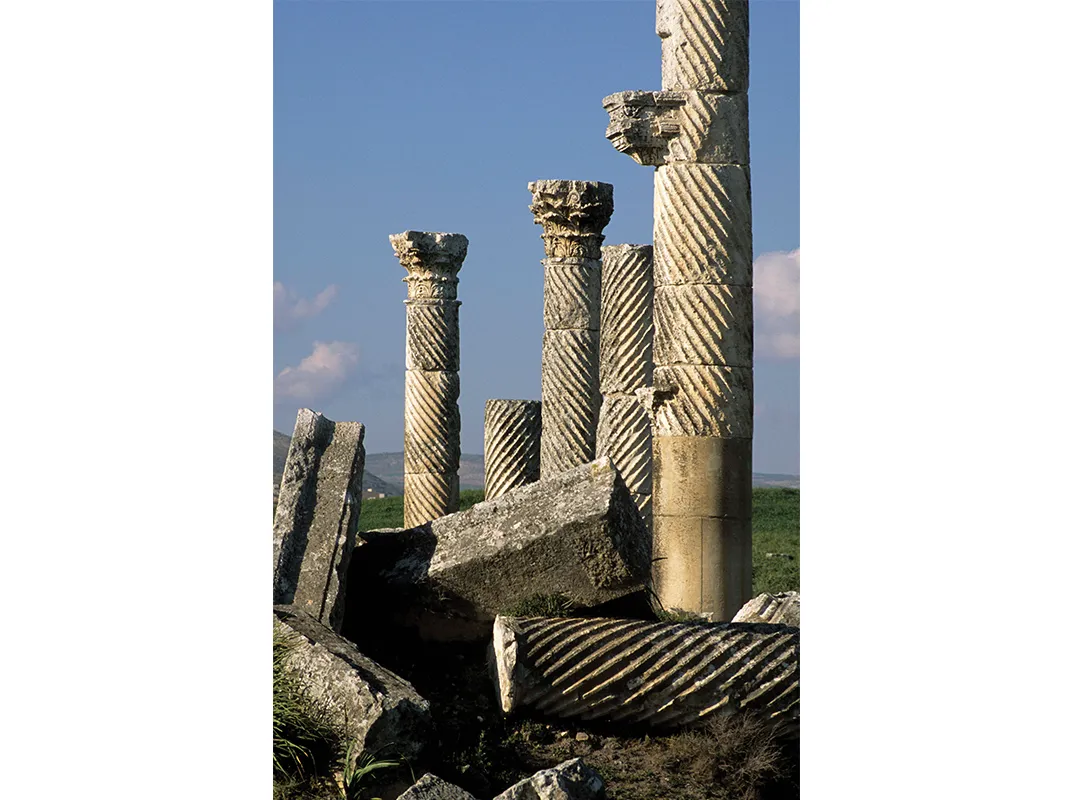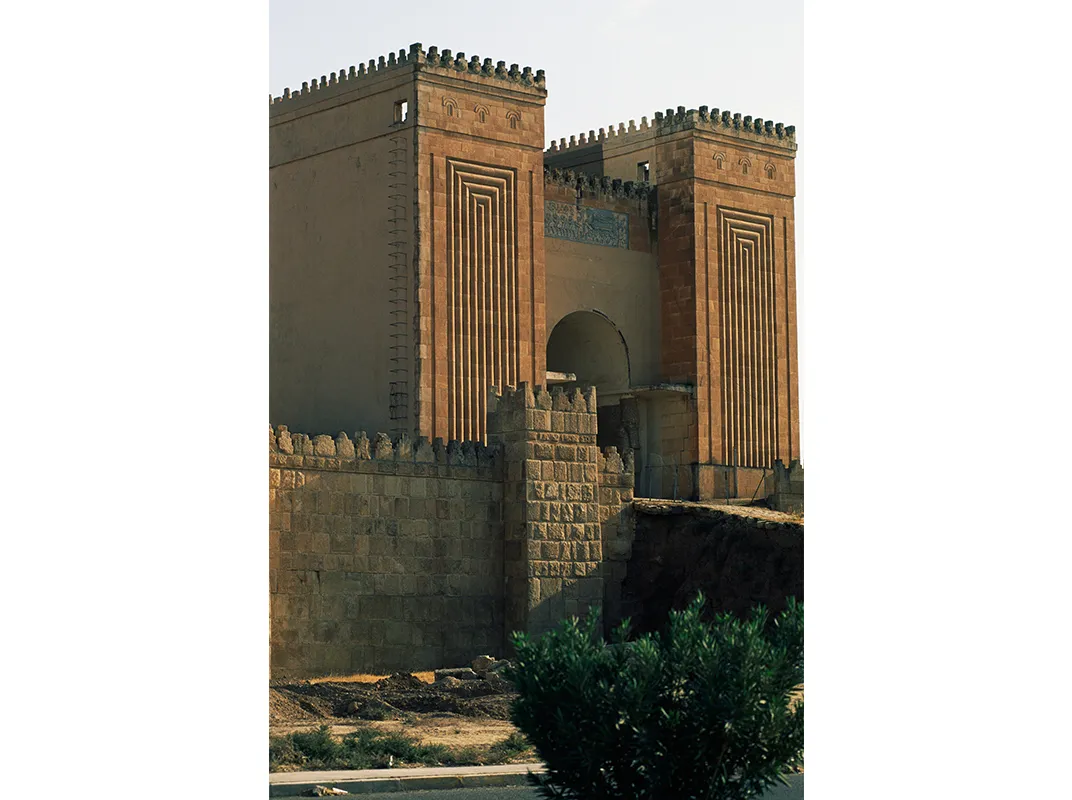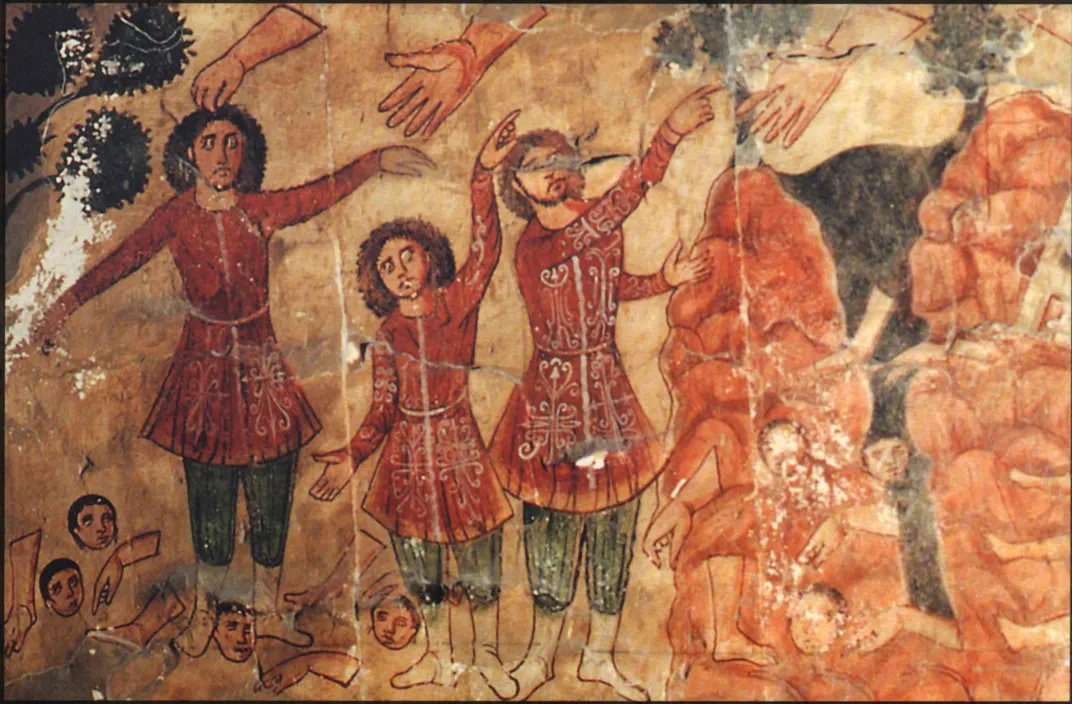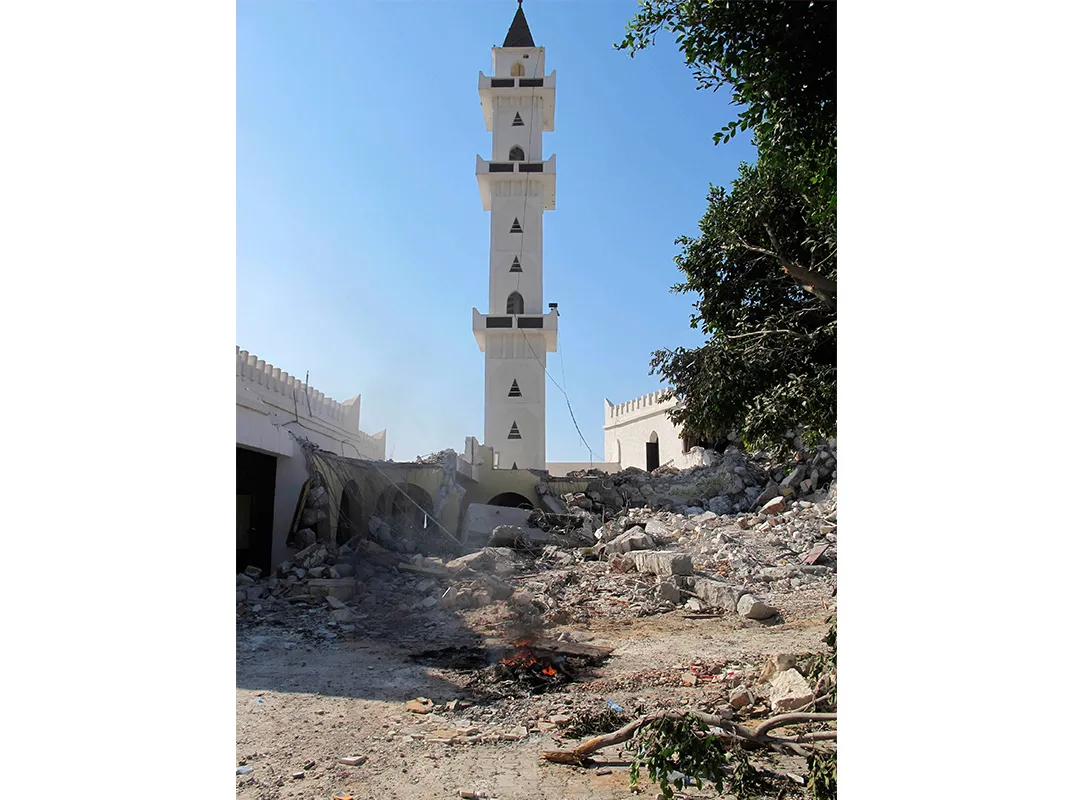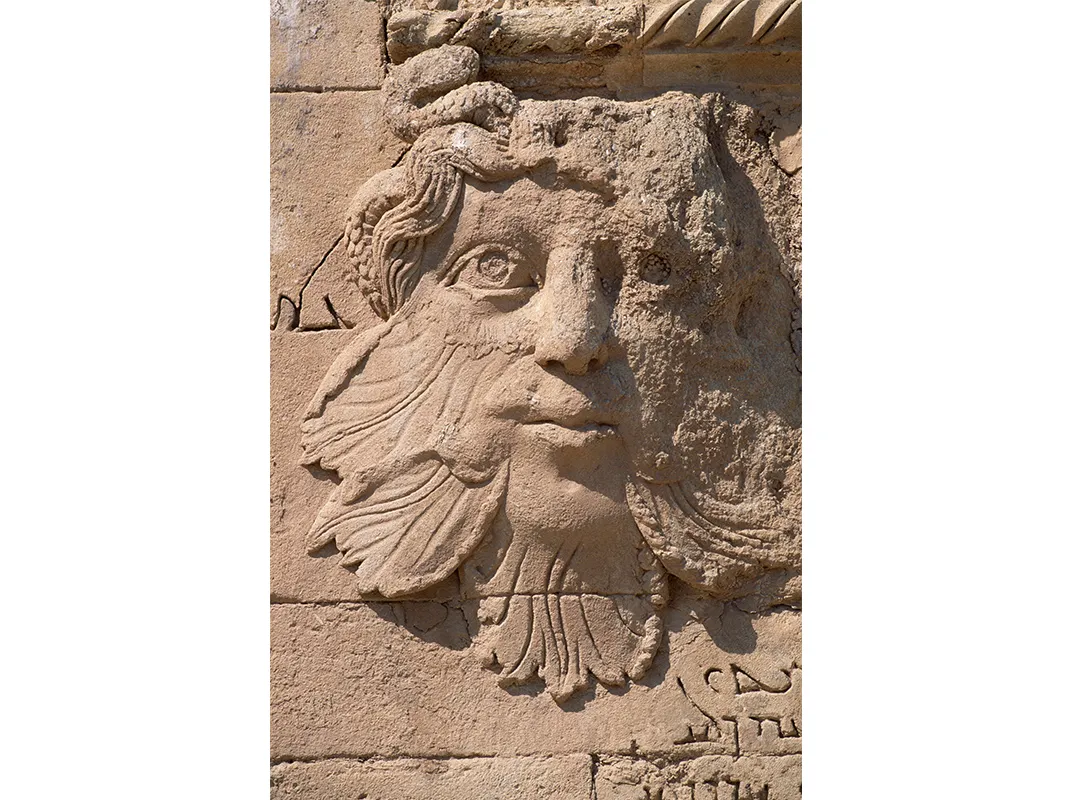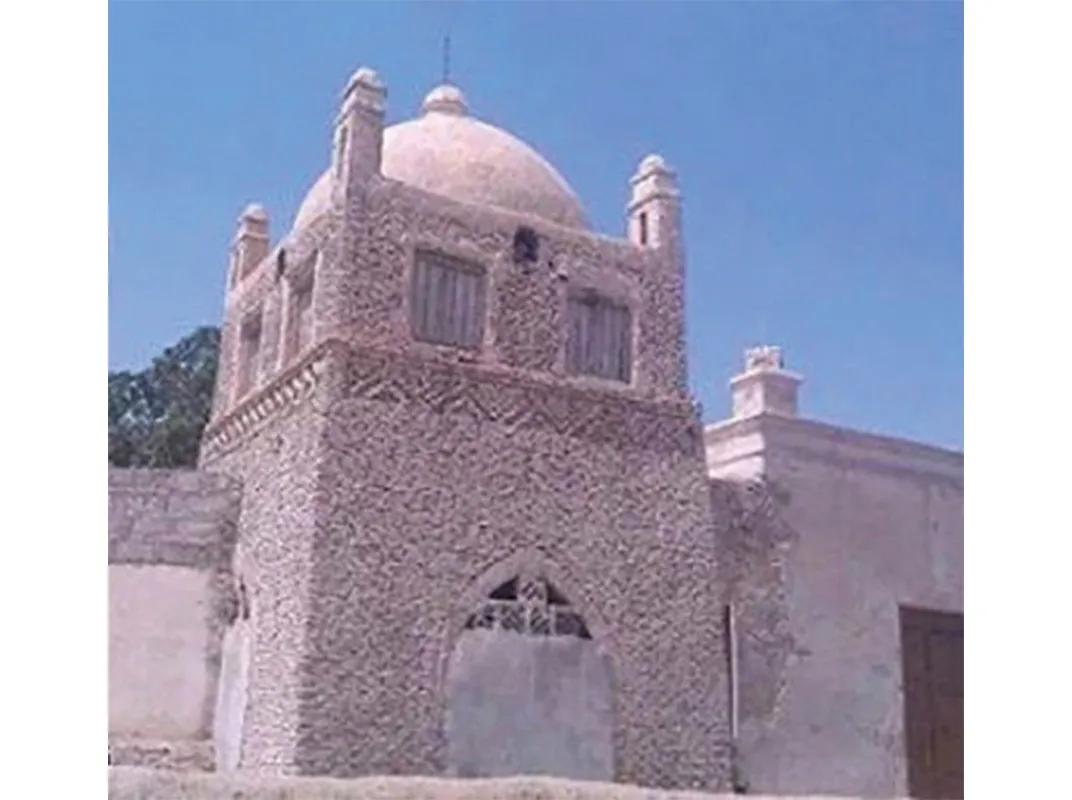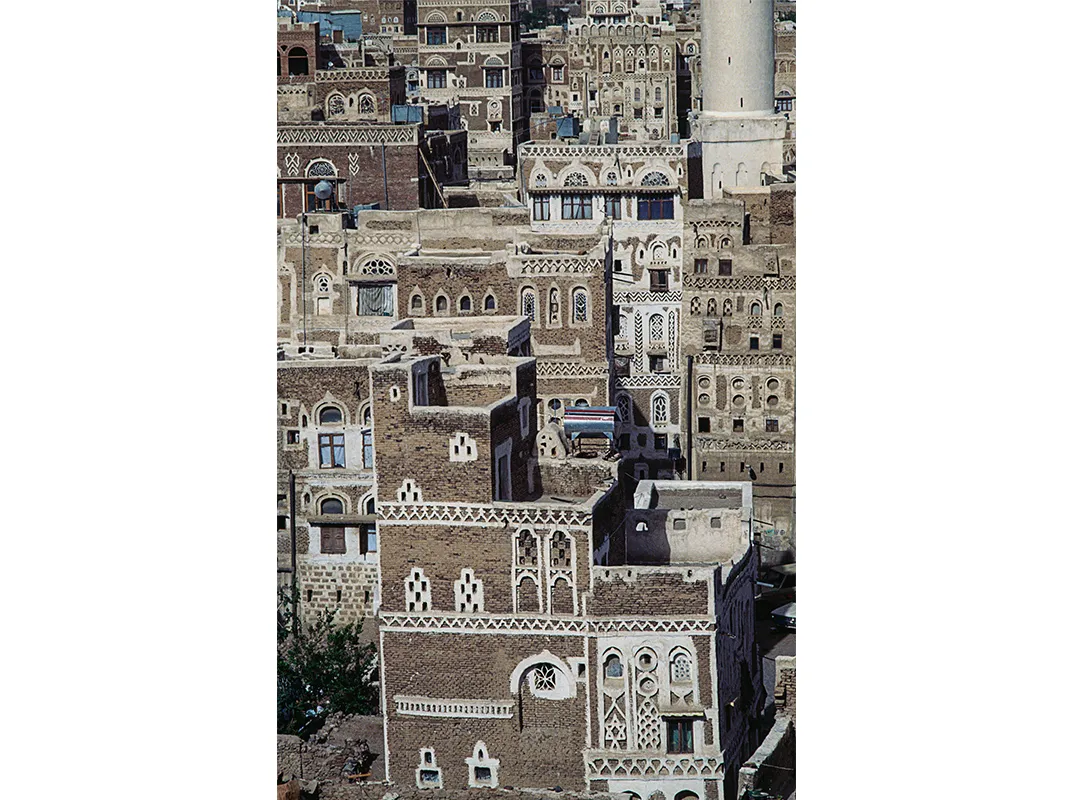The Race to Save Syria’s Archaeological Treasures
The deliberate destruction of antiquities by ISIS and others in the birthplace of human civilization is cultural genocide
:focal(2375x2148:2376x2149)/https://tf-cmsv2-smithsonianmag-media.s3.amazonaws.com/filer/21/71/21712fa7-eaee-4554-bdc5-4592b00001dc/mar2016_f_crisisarcheologysyriaopener.jpg)
We tread carefully, as if tiptoeing around the scene of a crime, through a series of beautiful arches into the narrow alleys of the ancient Souk al-Medina, which at some eight miles long is one of the most glorious covered markets in the entire Middle East, selling everything from soap and spices to jewelry, shoes, ceramics and textiles. Merchants from Europe and China and Iran, from Iraq and Egypt, have met here in Aleppo, Syria, to sell their wares since the 13th century. For just as long travelers have immersed themselves in the ornamented Turkish baths, or hammam. The last time I ambled around the market, five years ago, I could barely move amid the bustle.
Now it’s an empty wasteland, and a war zone. The entrails of old buildings—tangles of concrete and metal corsetry—poke down from ceilings or hang limply out of their sides. Many have been broken by mortars or toasted into blackened husks by the fires that followed. Some of the old stone arches we pass through look about to collapse. Holes have been blown in the wall of an old mosque, and its dome has crumbled like deflated pastry. In over an hour walking the length of the market, the only nonmilitary inhabitants I see are two roosters, stepping in single file and picking carefully through the broken glass. Apart from mortar shells thumping to the ground elsewhere in the Old City and the occasional round of gunfire, there is little sound but the lurch and creak of steel and upended masonry, like sinister wind chimes.
The souk is within the walls of Aleppo’s historic city center, one of six locations in Syria listed as World Heritage Sites by Unesco. Before largely peaceful protests in 2011 against the autocratic Syrian president Bashar al-Assad were met with government violence and devolved into a devastating civil war, killing at least a quarter of a million people and displacing millions so far, the country was one of the most beautiful on earth. Much of its enchantment came from its plentiful antiquity, which wasn’t fenced off as in European capitals but lay unceremoniously around—part of the living, breathing texture of everyday life. The country, at the crossroads of Europe, Africa and Asia, boasts tens of thousands of sites of archaeological interest, from the ruins of our earliest civilizations to Crusader-era fortifications and wonders of Islamic worship and art.
Now these antiquities are under large-scale and imminent threat. Already some of the most valuable have been destroyed as collateral damage in the shelling and crossfire between government forces and various rebel factions; others have been sold off, bit by valuable bit, to buy guns or, just as likely, food or a way to escape the chaos. Satellite images of treasured historical sites show the soil so completely pocked by holes, the result of thousands of illicit excavations, that it resembles the surface of the moon—destruction and looting, as Unesco director general Irina Bokova put it last fall, on “an industrial scale.”
And then there is the Islamic State, or ISIS, the terrorist group whose conquering of vast swaths of territory first in Syria and then in Iraq has turned the destruction of heritage into a new kind of historical tragedy. As seen in videos gleefully disseminated online by its infamous propaganda wing, ISIS militants have attacked priceless artifacts with jackhammers, rampaged through museum galleries housing historically unique collections, and exploded sites in territory they control for scarifying effect. Last May, hundreds of ISIS fighters overran another Unesco site in Syria, the ancient city of Palmyra, renowned for its Roman-era ruins.
Faced with the monumental scale of the country’s archaeological losses, it would be easy to succumb to fatalism. That would be wrong. Plenty has been saved, and there is more that can still be done. Behind the scenes, bands of men and women are working hard to move antiquities out of harm’s way, support buildings in distress and document the damage in the hope of doing something about it later on. As a British-Irish journalist long fascinated by Syria, I’d been covering the war since its beginning: sometimes with visas from the Syrian regime, other times embedded with anti-government rebel forces in the country’s north. Now I was determined to survey firsthand the destruction of cultural property, so I requested permission from the Syrian regime to go to Aleppo and meet with leading figures in the fight against it; to my surprise, the authorities said yes.
**********
Aleppo is Syria’s largest city, and its Old City, for three years a battleground between the Syrian Army and armed rebels, has seen some of the most extensive archaeological destruction. One thousand of the souk’s old market stalls and 140 historic buildings in the rest of the Old City have been damaged beyond repair. I am accompanied by a military chaperon, and twice we are forced into a sprint to avoid the attentions of a sniper. The government, which retook the Old City from rebel groups early in 2014, blames rebel militias for the destruction here, but this is disingenuous. Like many of Syria’s historic sites, the Old City’s narrow crannies and natural fortifications make good cover, and neither side has turned down the opportunity to use the place for military advantage. Sandbags are piled high at the intersections, which are now military outposts. Trapdoors, which perhaps once led to rebel tunnels, are everywhere. So are improvised barriers; at certain points the boulders are piled so high in front of us that we have to turn back.
In the residential quarter almost everything we walk past is beyond repair; whole five-story homes have been gutted by fire, their beams bent double under the stress. An old stone mansion built into the souk has been reduced to thick lumps of masonry, each a few feet long and resembling a giant brick; only the metal door, emblazoned with a nameplate, is still standing. A mosque dating from the Mamluk Sultanate, in the Middle Ages, is blackened, with fresh cracks in its side; in the library, books have been thrown onto the floor; empty shelves suggest that others are missing. Everything left behind is coated in soot.
Walking under a long vaulted roof snaking through the remains of the souk’s thoroughfare, we chance upon a carpeted side room with an imposing rectangular structure in its center. Three or so yards long, and wrapped in blankets, it resembles an animal. The box is a shrine to a famous sheik and historical figure named Ma’rouf Ibn Jamr. Although the surrounding architecture, including a connected mosque, has been severely damaged, the interior of the sheik’s shrine had been spared. My interpreter, from Syria’s Ministry of Information, a bespectacled, fastidious man whose ringtone is the overture from Mozart’s Marriage of Figaro, explains the government’s decision to keep it here rather than deconstruct it and move it elsewhere for safekeeping. “To remove it would be to ruin it,” he says. He also points out that the interred human remains should not be disturbed. “It’s a tomb, so it has its own respect. Keeping it here and protecting the whole area is a better option.”
As we move through the wreckage, my guide tries to remain upbeat. “This is the business heart of Syria,” he reminds me, and perhaps himself. “They can rebuild it.” They will have their work cut out for them. Unesco estimates that 60 percent of the Old City has been destroyed.
We arrive at a vantage point from which we can peer up and see, only yards away, the ancient Citadel, which dominates the skyline. The 150-foot-tall plateau was first settled as early as the third millennium B.C. Ancient cuneiform texts have identified it as the site of a temple dedicated to the storm god Haddad. According to the Koran, Abraham once climbed its hills to rest and milk his sheep. It was also used from the time of the Greeks to the Byzantines. In the 12th century, the son of Saladin—the great Kurdish warrior and founder of the Ayyubid dynasty—dug a moat and expanded the complex by building massive stone walls that have stood to this day. Now under the control of the Syrian Army, the Citadel is one of the few sites in Aleppo that hasn’t taken a hit.
Perhaps 500 yards away is the jewel of the Old City, the Ummayad Mosque, which was for several years in the hands of Islamist rebels. In April 2013, I was in Aleppo, on the rebel side of the battle lines, watching TV with fighters loosely affiliated with the Free Syrian Army as news arrived that the mosque’s beautiful and imposing minaret, built in A.D. 1090, had been destroyed, presumably by government artillery. Puffed up with their own propaganda, the rebels I sat with decried the brutality of the Syrian regime and, as they saw it, its wanton destruction of their religious symbols and places of worship.
But it takes at least two sides to make a war, and now I hoped to see if I could catch a glimpse of the mosque, esteemed as among the most beautiful in the Muslim world, from the regime-held part of the city. After a friendly army officer lets me into his watchtower, I race up eight flights of stairs in the dark, poke my head out of a tiny improvised turret—and there it is, framed in the foreground beneath the Citadel and the rest of the Old City, less than a hundred yards away in territory held by Islamist rebels. Its arches are still glorious and most of the rectangular building and intricately patterned courtyard are intact, but one of its two domes is punctured, and its thousand-year-old minaret lies collapsed in a heap of bricks.
**********
Inside the National Museum in Damascus, Ma’amoun Abdulkarim, the director of antiquities and museums, is telling me how gloomy his job has become. “When you’re adding new collections, it’s one of the most beautiful things,” says Abdulkarim, who until 2012 had been living a relatively quiet life as a university professor in Damascus. But now grim news reaches him every day: “I’m the first person to receive all the reports about the destruction—it’s very bad, psychologically.” The National Museum is a grandiose affair dating from the interwar period of the French colonial mandate, and Abdulkarim’s large, elegant office is spartan and barely furnished, as if he’s had no time to make it his own.
Our paths had crossed before. In March 2014, at Turkey’s border with Syria, a local fixer who smuggled journalists into rebel-held northern Syria had tried to involve me in trafficking stolen Syrian antiquities. Photos of his loot showed a clutch of ceramic pots, a slab resembling a limestone relief and coins embossed with the face of Zenobia, Palmyra’s third-century Syrian queen, who led a revolt against the Roman Empire. “It is very bad, but I have to make a living,” the man said with a shrug. He wondered if I might put him in touch with wealthy American buyers.
Unesco connected me with Abdulkarim, who, in a series of conversations on Skype, blamed the crisis on an “armed archaeological mafia” working with rebel militias and thriving on the chaos of the armed insurgency. His interest in conflict archaeology and conservation, he told me, stemmed from watching the widespread theft of antiquities that followed the American-led invasion of Iraq. Much of the loot ended up next door in Syria, where, he said, he and his colleagues did their best to find it and send it back.
Wearing a dark suit and tie, and flanked by a translator because of a misplaced nervousness about his command of English, Abdulkarim made engaging company. Our video conversations were punctuated by his giggling at my attempts to speak Arabic and French; his amusement contrasted with his evident horror at what was happening to his country.
Syrian state buildings are usually festooned with official portraits of Bashar al-Assad, but in Abdulkarim’s spacious office there is much less political decoration. Many of his former students work in activist organizations that support the Syrian opposition, and they are now trying to protect antiquities in rebel-held areas, often with aid from foreign governments. When I tell him I’ve spoken to Cheikhmous Ali, a Syrian academic in European exile who leads one such organization, he brightens in recognition and proudly says Ali is one of his former students. “He is now in the opposition,” Abdulkarim says. “He’s very political, but I understand different voices.” (For his part, Ali describes his former professor as a good man working for a bad regime: “He can’t say the whole truth. He wants to, but he doesn’t have the power to say stop to all this destruction by the Syrian Army.”)
But contrasting political allegiances haven’t stopped Syria’s archaeologists from working together for the greater good. One recent collaboration with opposition-friendly archaeologists in the northern Syrian province of Idlib, Abdulkarim tells me, yielded an agreement by all the armed parties and the local community to put valuable objects, including engraved tablets from the Babylonian era, behind a thick layer of concrete in the provincial museum in Idlib City. “You cannot open it easily,” Abdulkarim assures me, of the improvised security arrangement. “You need an electric machine.” All the same, he worries that Islamist extremist groups might not respect the agreement. “No one has taken it until now, because of the local community,” he says. “But all the groups know where it is.”
Abdulkarim has 2,500 people working under him, not just archaeologists but also engineers and architects—plus guards—including many who continue to work in areas outside the government’s control. In August 2012, a week after he became director of antiquities and museums, he says, he began working with international organizations like Unesco to gather the vast bulk of Syria’s archaeological treasures from around the country and transport them to the National Museum and other secure facilities. “We try to divide it up, just in case a catastrophe happens,” he says. It is dangerous work—ten of his employees have been killed. But since he took the job, Abdulkarim says, 300,000 objects, the overwhelming majority of Syria’s museum collections, have been safely hidden.
Now, however, he was reeling from a fresh catastrophe: A video had emerged weeks earlier showing ISIS’s religious police, who already had the run of much of northern Syria, taking pneumatic drills, bulldozers and explosives to obliterate a palace and statues at the ancient Assyrian city of Nimrud, in northern Iraq. The ninth century B.C. royal compound was built by King Ashurnasirpal II, who had it adorned with intricately carved stone relief sculptures depicting military conquests, ritual ceremonies and winged creatures; much of the artwork was remarkably well-preserved. In an editorial in ISIS’s glossy, English-language magazine Dabiq, entitled “Erasing the Legacy of a Ruined Nation,” the extremists invoked Koranic scripture and the sin of shirk, or idolatry, to label everything pre-Islamic as profane, and it glorified the destruction of “statues, sculptures, and engravings of idols and kings.” It also took direct aim at archaeologists and the very idea of a national identity. The kuffar—unbelievers—“had unearthed these statues and ruins in recent generations and attempted to portray them as part of a cultural heritage and identity that the Muslims of Iraq should be proud of.” Destroying Nimrud had caused a worldwide outcry, but that was part of the point—it had “served to enrage the kuffar, a deed that in itself is beloved to Allah,” the ISIS propaganda stated.
The group’s annihilative psychopathy seemed to peak in August, when it publicly executed Khaled al-Asaad, Palmyra’s 82-year-old head of antiquities for more than 40 years and a beloved archaeologist. ISIS beheaded al-Asaad and hung his body from a column in the city, condemning him as a “director of idolatry.” But according to some reports, the Islamists killed him because he had refused, during more than a month of captivity and interrogation, to reveal the location of antiquities that his staff had hidden away.
The capture of Palmyra, and the murder of its senior archaeologist, was a blow to Abdulkarim. An ancient trading post and expansive columned city in the central Syrian desert, Palmyra was an established caravan oasis before it came under the control of the Roman Empire in the first century, and its cultural importance as a trade route connecting Rome with Persia, India and China was clear from its unique art and architecture, combining Greek, Roman, Levantine and Persian influences. ISIS militants had pledged not to destroy Palmyra’s famous stone temples, presumably because to do so would fall afoul of their interpretation of Koranic principle, but Abdulkarim wasn’t inclined to believe them. “They are barbarians, extremists,” he said. “We can never trust their words. If the army comes, they will attack it out of vengeance.” The rumor was that ISIS fighters had secreted mines around some of the most famous monuments. From his staff, he heard that they were trying to break into the Palmyra Museum. “They thought that there was 2,000 kilos of gold hidden inside,” he said. “They are very stupid people.”
Abdulkarim told me that Palmyra’s most important artifacts and statues had been quietly removed to Damascus as ISIS approached. The last rescue operation was completed three hours before Palmyra fell; three of his employees had been wounded in the clashes. A Roman-era specialist himself, Abdulkarim shows me pictures of a hardy, two-millennia-old statue, known as the Lion of Al-lat, which weighed 15 tons and stood nearly 12 feet high. His staff in Palmyra had buried the great lion in the garden of the city museum, in a metal box fortified with sandbags, but ISIS had located and destroyed it. Now he was afraid for his staff members, too. Some had been able to flee to Homs, a hundred miles to the west, but others had been stranded in Palmyra’s modern city with their families—the area once had some 50,000 residents, and had recently swollen with internal refugees from other parts of the country—and weren’t allowed to leave. Like the ancient city itself, they were being held hostage by ISIS, and might well be disposed of at any time for maximum propaganda effect, or for seemingly no reason at all.
Abdulkarim invites me down several flights of stairs to see some of his staff at work. Behind blast-proof doors in the basement of the National Museum, rows of vinyl-gloved young men and women are hunched over tables, wearing masks covering their mouths. Some are holding tiny clay tablets covered in cuneiform, the ancient writing script developed by the Sumerians, among the region’s many transformative contributions to history and culture; these are part of a batch quietly transported from Mari, a Bronze Age city in eastern Syria now in territory controlled by the Islamic State. A worker examines each tablet and assigns a serial number, which is typed into a computer; then the item is photographed and delicately clothed in wrapping paper before being packed away until such a time that the country might be safe again for antiquities.
The tables are piled high with hundreds of these tiny, carefully labeled boxes. “Illegal excavation has destroyed the site,” whispers an assistant. When I take out my camera, a man in a checked shirt I had assumed was a guard quickly turns his back and stands firmly against the wall, his arms folded. “Please, please,” says the assistant, gesturing with his palms that I should put my camera away. It turns out that the man is the one going back and forth between here and Mari to retrieve the priceless tablets. If he were identified and caught by the Islamic State, it would mean certain death.
**********
Sites and items of archaeological interest have always been collateral damage in times of conflict. No one could deny, for instance, the vast stores of cultural inheritance lost during World War II. But targeted destruction of millennia-old antiquities in the birthplace of human civilization, home to ancient centers of power where writing, farming and the world’s first cities took shape, suggests that we are witnessing a threat to humankind’s shared heritage of a type never before seen.
When I asked Glenn Schwartz, an archaeologist and the director of Near Eastern studies at Johns Hopkins University, if he could think of any precursors to the Islamic State’s deliberate annihilation of archaeological treasure under its control, he mulled the question for a moment and mentioned the religious icons and images banned and destroyed by the Byzantine Iconoclasts in the eighth and ninth centuries. But even those acts of vandalism usually involved artifacts that were, he says, “relatively contemporaneous to the acts of destruction.” In contrast, ISIS is “targeting buildings which have been standing for 2,000 years or more.” Palmyra in Syria, Nimrud in Iraq: These ancient cities were critical to human history and are irreplaceable.
Even the widespread looting that accompanied Syria’s slide into chaos is a relatively recent phenomenon—a byproduct, according to Schwartz, of westernized interest and globalized markets. “Five hundred years ago, people wouldn’t have bothered looking for artifacts,” says Schwartz. “There was simply no market for them. It’s because we in the West value these things in a way that no one did before 1800.” Schwartz believes that ISIS understands this, and that its televised campaign of archaeological wreckage is intended to undermine the modern states of Syria and Iraq, which prided themselves on their stewardship, and to scandalize everyone who values these antiquities highly. And now that archaeological destruction has become an established weapon in the Islamic State’s armament, says Graham Philip, an expert in Middle Eastern archaeology at Durham University in Britain, other groups in the region or farther afield may adopt it.
In the meantime, the destruction in Syria continues unabated. In July of last year, part of Aleppo’s Citadel fortress collapsed. Rebels had dug a tunnel underneath it and, to get them out, the Syrian Army blew the tunnel up, damaging the Citadel wall. In November, another explosion led to further damage near a famed iron gate adorned with dozens of horseshoe designs—the Mamluk Army of the 13th to 16th centuries fought on horseback using bows and arrows—that guards the arched bridge entrance to the Citadel. The view I stole from a tiny military turret in the souk, unchanged for thousands of years, was never going to be the same again.
Then, in August, days after the murder of Khaled al-Asaad, an Islamic State video showed ISIS militants rolling barrels of explosives into the first-century Temple of Baalshamin, dedicated to the Phoenician sky god, one of the best-preserved structures in Palmyra; shortly afterward, there was an explosion, and once the dust settled it was evident that the place had been razed. Satellite imagery confirmed the temple’s destruction—a “new war crime and an immense loss for the Syrian people and for humanity,” Unesco’s Bokova said.
But most Syrians today are concerned primarily with matters of life and death, and at one point I asked Abdulkarim why anyone should worry about antiquities when people were being killed on an unimaginable scale. “I understand the humanitarian problem in Syria,” he told me. “But we are from the people—we are living this life in Syria.” The country’s geography means that it has been touched by a cascade of different empires and civilizations, from the Sumerians, Assyrians, Akkadians and Babylonians to the Hittites, Greeks, Persians, Romans, Mongols and Arabs. Syrians on many sides of the conflict feel the threat to this shared inheritance intensely.
Abdulkarim, a man of mixed ethnic heritage—his mother is Kurdish and his father is Armenian—sees the destruction of Syria’s archaeological heritage as a blow to the modern nation’s hybrid identity, forged among numerous ethnic and religious groups. Syria’s incomparable ancient physical history has long been touted by the regime, which made a priority of protecting it, just as its security state brutally maintained the country’s fragile sectarian mosaic. Now the breakup of the country has never seemed so terrifyingly real. “Syria for me is like a wounded man,” Abdulkarim went on. “My job is to preserve his head. If one day this wounded man recovers his health, he can see what he is. But if we lose the Syrian heritage, we lose the Syrian common memory. And then we lose the Syrian identity.”
The Pulitzer Center on Crisis Reporting supported James Harkin's recent travels to Syria and Iraq for this dispatch.
